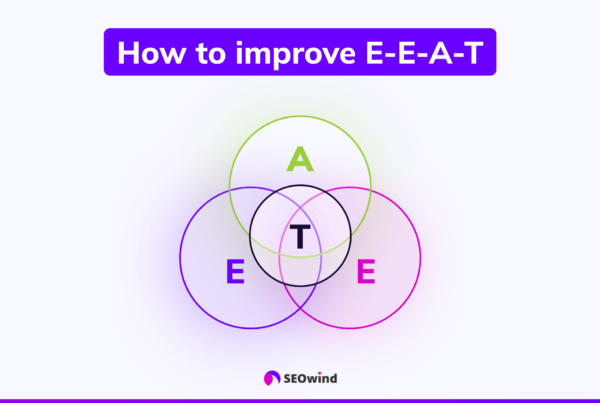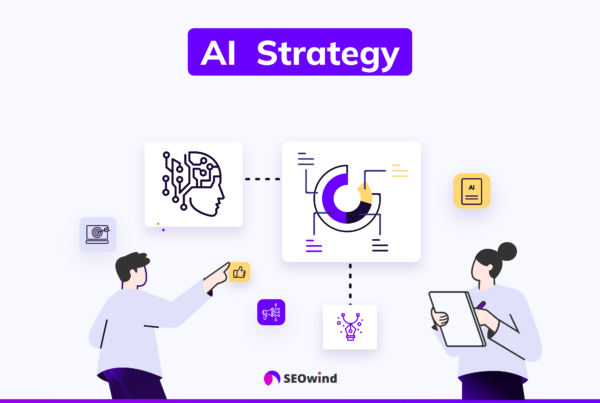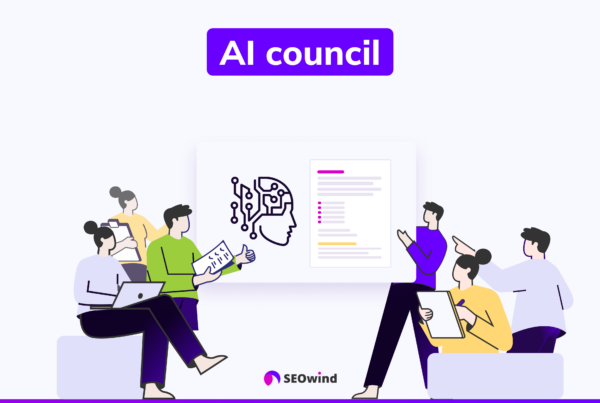Welcome to the ultimate guide for content marketing in 2024! With the digital landscape constantly changing, businesses of all sizes must stay ahead of the curve. That’s why I’ve compiled these important content marketing tips that have propelled SEOwind and many others to success. This comprehensive resource will unveil practical, actionable insights that drive results and help you navigate everything from understanding your audience to promoting your work effectively. So strap in, grab a pen (or open up your notes app), and revolutionize your content strategy!
Tip 1: Understand the Basics of Content Marketing

Before diving headfirst into advanced strategies, it’s essential to understand what content marketing entails. At its core, content marketing creates valuable, relevant material to attract, engage, and retain an audience while driving desired business outcomes such as lead generation or customer acquisition.
To excel in content marketing, keep these fundamental principles in mind:
- Focus on quality: One well-crafted piece can hold far more impact than several hastily assembled posts.
- Educate and entertain: Your target market wants answers, so ensure the provided information delivers value, ultimately inspiring trust.
- Be audience-centric: Tailor content based on consumer desires by conducting thorough research—knowing their preferences allows for versatility in addressing different demographics’ needs.
- Optimize strategically: Use robust keywords and SEO-friendly practices for maximum visibility; this aids potential customer’s ability to discover your website organically.
- Consistency breeds familiarity: Adhere to a steady posting schedule while maintaining a consistent brand voice throughout various channels—an essential ingredient for cultivating lasting relationships with consumers.
By grasping these foundational concepts, you’ll set yourself up for impressive achievements within the world of content marketing. As we proceed through our array of expert-tested tips and techniques outlined below, remember that staying true to these basic tenets will undoubtedly generate outstanding results.
Tip 2: Know Your Target Audience
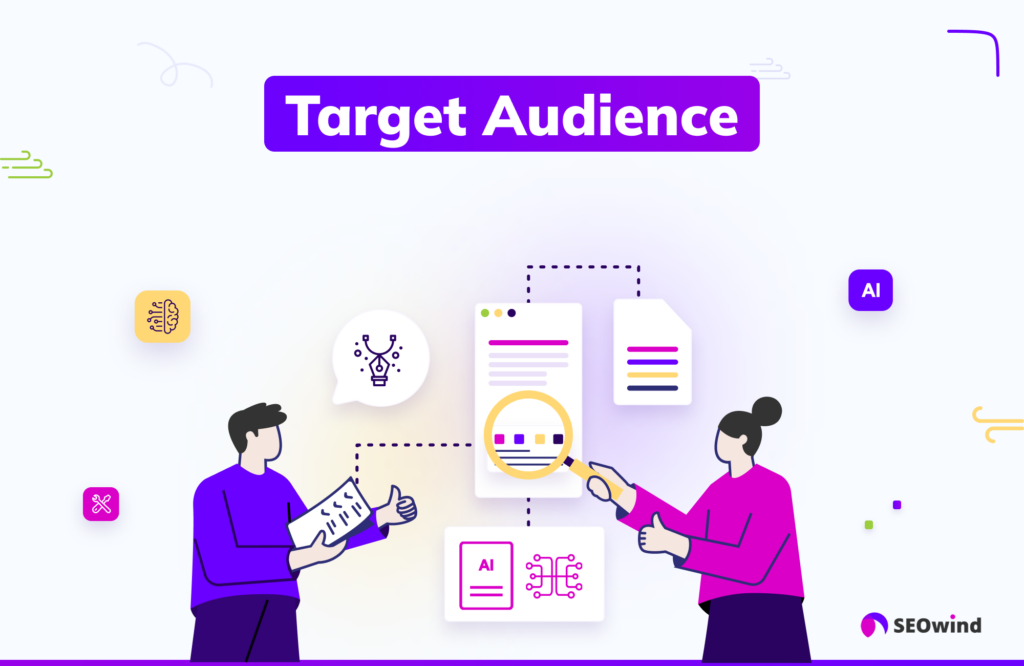
One of the most important content marketing tips is knowing your target audience. Understanding the needs and preferences of your target audience will help you create more effective and engaging content that addresses their concerns, solves their problems, and ultimately drives more conversions.
Identify Demographic Factors
Begin by identifying your target audience’s demographic factors, such as age, gender, location, occupation, income level, and education status. This information can guide your content strategy and ensure your chosen topics are relevant to your audience. Some methods to gather these insights include:
- Analyzing existing customer data
- Conducting surveys or polls
- Researching industry trends and reports
Understand Their Pain Points
Understanding who your customers are and what issues they face daily is essential. By addressing these pain points in your content marketing efforts, you provide valuable solutions that make their lives easier. You can identify pain points by:
- Reviewing comments on forums or social media platforms
- Listening to feedback from sales or support teams
- Talking directly with customers during interviews or focus groups
Define Their Goals and Aspirations
Your audience’s goals and aspirations should also influence the content you create. Cater to these objectives by developing content that helps them achieve success on a personal or professional level. Here are some ways to uncover this information:
- Monitoring online conversations about similar products or services
- Engaging with industry influencers for insights
- Studying popular blog posts within your niche for themes
Determine Content Consumption Preferences
Lastly, understanding how your target audience prefers to consume content enables you to tailor the format accordingly. In addition to written articles like blogs and case studies, consider incorporating other types of content, such as videos, podcasts, infographics, webinars, checklists, etc., into your strategy based on user preferences. To gather insights about consumption habits:
- Use Google Analytics or similar tools to reveal top-performing content formats
- Review social media analytics for user engagement patterns
- Conduct audience surveys asking for specific preferences
Incorporating these targeted insights into your content marketing strategy ensures you deliver your audience the most relevant, engaging, and valuable content.
Tip 3: Research and Analyze Your Competitors

Performing thorough content research on your competitors is crucial for developing effective content marketing strategies. By gaining insight into the tactics that work for other businesses in your industry, you can refine your approach and identify untapped opportunities to boost visibility and engagement with your content. This section will provide essential digital marketing tips on thoroughly analyzing competitors to uncover their strengths, weaknesses, and best practices.
Identify Your Top Competitors
Begin by identifying your top 5-10 direct and indirect competitors to benchmark against their performance. To find them, use search engines such as Google and Bing to look up keywords relevant to your industry or perform branded searches for similar products/services.
Conduct a Content Audit of Competitor Websites
To understand the types of content that resonate with your target audience, perform a comprehensive audit of competitor websites. Look out for:
- Blog articles: Evaluate topics covered, format (listicles, how-to guides), length, writing style, or tone.
- Infographics: Observe design elements, data sources used, and topics discussed.
- Videos: Assess video length, quality, and scriptwriting style (e.g., humor or professional).
- Social media presence: Analyze platforms used and the frequency of posts or updates.
When auditing competitor websites, one valuable content marketing tip is noting what types of content they create and what topic gaps you could fill in.
Examine Backlink Profiles
Investigate the backlink profiles of each competitor by using tools such as Ahrefs or SEMrush. This lets you discover high-quality sites linked to their pages to capitalize on similar connecting opportunities within your content strategy.
Monitor Competitor Social Media Shares
Track social media shares received by competitors’ blog posts or other forms of content using tools like BuzzSumo or SharedCount. By monitoring these metrics closely, you can identify the types of content that are most engaging and shareable, which may guide your content creation efforts.
Watch Competitor Keyword Strategies
Keep a close eye on your competitors’ keyword strategies by detecting their top-ranking keywords and search volume. This invaluable content marketing tip allows you to cherry-pick the most relevant keywords for your target audience, giving you a clear understanding of how to tailor your SEO strategy for maximum achievement.
Researching and analyzing your competitors is essential to developing successful content marketing techniques. By leveraging this information effectively in crafting your high-performing content strategy, you’ll stay ahead of the competition and maximize your chances of attaining content marketing success in 2024.
Tip 4: Prioritize Topics Using “Business Potential”
When developing a content marketing strategy, it’s essential to prioritize topics based on their potential to drive business results. This process helps align your content with overall company objectives. It ensures that you deliver relevant and valuable information to your audience.
Let’s explore how to evaluate the business potential of various topic ideas and offer some tips for prioritizing your content creation efforts.
Assessing Business Potential
To determine the business potential of a topic, consider factors such as:
- Relevance: Evaluate whether the subject matter is pertinent to your target audience and reflects their interests or pain points.
- Demand: Gauge user intent by researching search volume data with tools like SEMrush or Ahrefs.
- Authority: Identify if you possess unique expertise or insights in the topic area, which can help establish credibility and trust among readers.
- Conversion potential: Reflect on how likely it is for consumers searching for this information to be drawn further into your sales funnel.
By weighing these elements, you can better understand which topics should precede your content marketing calendar.
Content Marketing Tips for Prioritizing Topics
Here are some techniques for effectively prioritizing topics based on business potential:
- Start by generating an extensive list of possible subjects relevant to your industry, products, or services.
- Use a scoring system to rank each idea according to relevance, demand, authority, and conversion potential.
- Create quarterly or monthly content plans focusing on high-priority subjects while balancing evergreen themes with timely trending topics.
Incorporating these best practices into your content marketing strategy will help ensure that you spend time creating purposeful pieces with clear benefits for both readers and businesses alike.
Diving into new topic areas could expose untapped niches within an existing market. For instance:
- Collaborate with team members across departments (sales, product development) for fresh insights and ideas.
- Monitor industry news, forums, and social media to gather inspiration on emerging trends or themes.
- Listen closely to your customers’ feedback and address their queries through informative content pieces.
By prioritizing topics based on business potential, you’ll maximize the return on investment for your content marketing efforts – strengthening brand identity, driving meaningful traffic, and ultimately converting prospects into loyal customers.
Tip 5: Go After Specific Keywords with Your Content

By incorporating keywords that align with your business’s products or services, you’ll drive targeted traffic to your website from users actively searching for information relevant to their needs.
Conduct Thorough Keyword Research
Before creating content, you should conduct thorough keyword research to identify the most valuable keywords within your niche. The process involves:
- Brainstorming a list of potential keywords related to your business and industry.
- Using keyword research tools such as Ahrefs, SEMrush, or Google Keyword Planner to gather keyword search volume, competition level, and relevancy data.
- Selecting the appropriate long-tail and short-tail keywords based on their value and competition.
Following these steps will equip you with appropriate keywords for your content.
Integrate Targeted Keywords Naturally
Once you’ve identified suitable target keywords, it’s crucial to integrate them naturally throughout your content without appearing forced or excessive. This ensures better readability and helps avoid any penalties by search engines due to keyword stuffing.
Some best practices for integrating targeted keywords include:
- Use the primary keyword organically within the title or heading tags (H1).
- Whenever possible, incorporate the primary and secondary keywords in subheadings (H2 and H3).
- Ensure targeted keyword variations appear throughout the article while maintaining a natural flow.
- Avoid overusing exact-match phrases – use synonyms and related terms instead.
Regularly Monitor Your Keyword Performance
A critical aspect of leveraging specific keywords is continuously monitoring their performance using metrics like click-through rate (CTR), organic traffic growth, visibility changes for high-quality backlinks, and social media share detection, among other progress indicators. Regular monitoring allows for identifying underperforming keyword-targeting areas that may need improvements and opportunities to capitalize on emerging trends in your industry.
Targeting specific keywords with your content is indispensable to a successful content marketing strategy. This way you can dramatically improve online visibility and drive highly qualified traffic to your website.
Tip 6: Nail the Search Intent

Understanding what users seek when they type a specific query into a search engine will help you tailor your content accordingly, resulting in improved visibility and engagement.
Let’s delve deeper into three aspects of search intent: content type, format, and angle.
Content-Type
Firstly, it’s essential to understand which content types resonate more with your target audience. There can be several types of content given different user intents:
- Informational (e.g., blog posts or articles)
- Navigational (e.g., homepage or product landing pages)
- Transactional (e.g., product reviews or comparison charts)
To determine the content type best suited for the target keyword, observe the search engine results page and identify any patterns among top-ranking pages.
Content Format
Once you have determined the appropriate content type that matches user intent, consider which format can provide an engaging experience for your readers. Different formats that work well in terms of SEO and user engagement include:
- Listicles
- How-to guides
- Case studies
- Infographics
- Videos
Aligning your content format with audience preferences and search intent can significantly improve user engagement metrics such as average time spent on a page, bounce rate, or social sharing.
Content Angle
Lastly, choose an effective angle by focusing on topics relevant to your audience’s interests while positioning your brand as an authority in its respective niche.
A successful content angle should accomplish three main objectives:
- Address a specific problem or need your target audience has.
- Present unique insights that differentiate it from competitor content.
- Pick up some strategies and tactics from other proven niches.
By accurately understanding keywords’ search intent through these three pillars you are better equipped to create engaging content that meets users’ needs while driving impressive results for your SEO and overall marketing efforts.
Tip 7: Develop a Content Calendar – Be consistent

A content calendar helps you consistently plan, organize, and schedule your content. Consistent improves your brand’s credibility, keeps your audience engaged, and leads to higher search engine rankings.
Benefits of a Content Calendar
Having a structured content calendar offers numerous benefits:
- Streamlines workflows: Team members can efficiently coordinate their efforts by establishing when and what type of content should be published.
- Enhances organization: You gain better control over your overall content strategy as you view upcoming topics and meaningful events at a glance.
- Ensures consistency: Consistent publication of high-quality materials allows for steady audience engagement and growth.
- Facilitates collaboration: Multiple contributors or managers can easily access the shared calendar, promoting efficiency and teamwork.
How to Create an Effective Content Calendar
Follow these best practices for creating an efficient content calendar:
- Choose a suitable platform: You may use paper-based planners or digital tools like Google Sheets, Trello, Asana, CoSchedule, or any other project management software that suits your needs.
- Include pertinent details: Each entry should contain information regarding its title, status (draft/editing/published), author/editor, due date(s), distribution outlets, target keywords, and specific call-to-actions (CTAs), if applicable.
- Factor in deadlines: Set realistic timeframes for drafting, revising, and publishing each piece of content while considering factors such as research requirements and potential delays.
- Plan for special dates: Incorporate holidays or key industry events into your schedule to capitalize on unique promotional opportunities.
Remember to use several relevant keywords throughout this section—content marketing tips for small business operators should always include suggestions geared toward maximizing efficiency without sacrificing quality or creativity.
Lastly, regardless of which method you choose to create and maintain your editorial calendar, keep it up-to-date and visible to all team members involved.
Tip 8: Don’t Obsess Over Word Count
Creating high-quality content makes it easy to focus on hitting a specific word count. While long-form content can be effective, obsessing over the length of your articles can hinder the quality and effectiveness of your message.
Here are some reasons why focusing too much on word count is not always beneficial:
Quality Over Quantity
Focusing on producing a precise number of words may add unnecessary fluff or filler information, ultimately weakening your key messages. Prioritize delivering valuable, informative content that addresses your audience’s needs and satisfies their curiosity.
Varied Content-Length Suits Different Needs
Different types of content call for varying lengths. For instance, an in-depth research article may require more words than a quick-tip article catering to beginners. Remember, relevance and usefulness often trump length when creating engaging materials.
Readability Matters
By utilizing a clear structure with headings, subheadings, short sentences, and concise paragraphs, you’ll ensure that your writing remains accessible for users of all reading levels. Readers appreciate when important points are easily digestible – prioritize it over meeting an arbitrary word count target.
Catering to Changing Reader Preferences
Today’s readers have varied preferences when consuming content. At the same time, some prefer lengthy blog posts that delve deep into topics. In contrast, others seek out bite-sized pieces for immediate consumption during downtime. By offering a diverse range of content lengths in your marketing strategy, you will cater to broader reader preferences.
Instead of strictly adhering to specific word counts, consider these factors:
- Is the information presented useful and relevant?
- Does the piece effectively communicate its intended message?
- Are ideas expressed clearly?
These questions should serve as guiding principles when balancing enriching knowledge transactions and providing an enjoyable reading experience.
Tip 9: Write Long-Form, Evergreen Content
Long-form, evergreen content has a longer shelf life. It performs better in search rankings due to its comprehensive nature and the value it provides readers.
The Benefits of Long-Form Content
Long-form content typically consists of 1,500 words or more, delving deep into a topic and offering insights that might not be available in shorter pieces. Here are some benefits of producing this type of content:
- Higher SEO visibility: Long-form articles rank higher on SERPs (Search Engine Result Pages) because they provide more information for search engines to index.
- Increased user engagement: Lengthy posts keep your audience engaged with your website for an extended period, reducing bounce rates and helping build credibility.
- More social shares: Comprehensive articles are often shared widely across social media platforms, as users perceive them as valuable resources.
What Is Evergreen Content?
Evergreen content refers to articles or blog posts that remain relevant over time. In other words, they don’t become outdated quickly. Some examples include how-to guides, case studies, and industry best practices. To create successful evergreen content:
- Choose topics with a lasting appeal: Focus on subjects relevant to your target audience that won’t change drastically over time.
- Use timeless language: Avoid references to specific dates or events that could make your content seem dated.
- Keep it updated: Although evergreen content is meant to stand the test of time, you should review and update it periodically for accuracy.
By combining the strengths of long-form and evergreen content marketing techniques, you can craft captivating resources that will attract readers’ attention today while continuing to bring in traffic well into the future. Remember these tried-and-tested tips for creating compelling, long-form, evergreen pieces:
- Thoroughly research your topic to become an authority on the subject.
- Break down complex ideas into easy-to-understand sections with subheadings for better readability.
- Include credible sources and links, proving your arguments are based on reliable data.
- Incorporate relevant keywords throughout the article, improving SEO rankings and attracting organic traffic.
- Add visual elements like images or infographics to enhance readers’ experience and boost shareability across social media platforms.
The combination of long-form content and evergreen topics empowers you with a fantastic strategy that consistently drives website traffic, generates leads, and fosters trust in your brand’s expertise.
Tip 10: Vary Content Types

Diversify and experiment with various types of content. This approach keeps your audience engaged and helps you cater to different preferences, learning styles, and stages of the buyer’s journey. In this section, I’ll share some proven content marketing tips for diversifying your content portfolio.
- Blog Posts: Blog posts are a staple in any good content marketing strategy. They allow you to provide valuable information, establish authority within your niche, improve SEO rankings, and keep visitors on your website longer. Invest in creating high-quality blog posts covering evergreen topics and time-sensitive industry news.
- Videos: Visual elements like videos have significant engagement potential by making complex concepts accessible and enjoyable for your audience. Various video formats can be utilized – instructional videos, behind-the-scenes insights or events coverage, expert interviews, animations, and infographics – to name a few.
- Podcasts: Podcasts offer an on-demand listening experience for gaining knowledge on specific subjects while multitasking or during commutes. Including podcasts in your content strategy helps you attract new audiences and enables people to consume your material conveniently.
- Case Studies: One effective way to demonstrate the value of your products or services is through case studies that outline real-life implementations and positive outcomes. These are powerful testimonials from satisfied clients, exhibiting tangible results while building trust among prospects.
- Infographics: Providing visually-appealing summaries or bite-sized chunks of data can significantly assist in educating target audiences quickly and effectively through infographics; these easy-to-digest visuals are ideal for social media sharing.
- E-books or Whitepapers: Long-form pieces like eBooks or whitepapers provide a deeper understanding of specific topics related to a customer’s needs or pain points. This comprehensive resource format fosters brand authority and credibility while garnering trust from discerning audiences.
To ensure higher content marketing success, prioritize a mix of formats that resonate best with your target audience. Utilize analytics to uncover their preferences, and consider experimenting with new formats to keep the experience fresh. Lastly, optimize each piece for SEO using relevant keywords (such as content marketing tips or techniques) to maximize visibility and discoverability across different platforms.
Tip 11: Create Original Content
Original content sets your brand apart from competitors, showcases your unique voice, and offers valuable insights that cannot be found elsewhere on the web. Creating original, high-quality content also establishes credibility and positions you as an industry expert, increasing trust among your audience.
Benefits of Crafting Unique and Innovative Content
Several advantages arise from focusing on generating original content for your marketing strategy:
- Boost search engine rankings: Search engines prioritize unique and relevant materials when ranking pages. Creating fresh and engaging content can help improve your organic visibility in search results.
- Sustain reader interest: Offering new perspectives keeps your audience engaged and builds anticipation for future posts or articles.
- Promote social media engagement: Distinctive content has a higher potential for shares, likes, and comments across various social media platforms.
Tips for Developing Authentic Content
If you’re aiming for a successful content marketing campaign, consider these effective strategies to produce authentic material:
- Research carefully: Become familiar with what’s already published within your industry by monitoring competitor sites and following trending topics. Understanding the available information landscape makes it easier to spot gaps or untapped angles worth exploring.
- Leverage personal experience: Incorporate expertise gained through first-hand experience into your writing. Sharing real-life stories can resonate more powerfully with readers than repackaged facts.
- Offer exclusive insights: Conduct interviews with industry leaders or partner with other experts to provide perspectives not available elsewhere online.
- Challenge conventional wisdom: Re-examining prevailing beliefs or assumptions within your field may reveal new truths that alter traditional thinking.
Avoiding Plagiarism – An Essential Content Marketing Tip
In addition to generating unique ideas for articles or blog posts, avoid plagiarism at all costs. Unintentional duplication of content can damage your credibility and lead to potential legal issues. Tools such as Copyscape, Grammarly, and Turnitin enable quick plagiarism detection in the text, ensuring that you maintain a high standard of originality for every piece published.
By prioritizing original content, you’ll captivate an audience eager for novel insights and reinforce your brand’s reputation as an expert thought leader. Your content marketing success in 2024 will reach new heights with consistent investment in quality materials.
Tip 12: Use Conversational, Simple Language
As a content creator, one of the most effective content marketing tips is to write in conversational and straightforward language. This makes your content more engaging and easy for readers to understand. An approachable tone and precise language can attract a wider audience and better connect with them.
Benefits of Using Conversational Language
There are several advantages to adopting this writing style in your work:
- Increased reader engagement: A friendly, conversational tone invites readers to stay on the page longer and interact with your content.
- Improved comprehension: Simple language reduces complex ideas into digestible particles so readers can quickly grasp the message.
- Enhanced credibility: Readers will perceive you as knowledgeable yet relatable when communicating complex concepts clearly and efficiently.
Implementing a conversational writing style requires integrating techniques such as active voice, addressing the reader directly, incorporating personal anecdotes or examples, and posing rhetorical questions.
Tips to Write in Simple Language
To ensure that your language remains uncomplicated while still providing informative content marketing advice or ideas:
- Avoid jargon: Use everyday vocabulary rather than industry-specific terms that could alienate some readers.
- Shorten sentences: Keep your sentences brief (15 words max) without compromising on meaning for easy readability.
- Maintain clarity: Make sure there is no ambiguity in your writing by explaining things in detail whenever needed.
By employing conversational and simple language in your content, you can effectively convey essential content marketing tips, techniques, or best practices to your readers. This approach will ultimately increase engagement, comprehension, and credibility as a reliable industry information source.
Tip 13: Create Valuable Content for Your Audience
In content marketing, one important rule is to create valuable content that addresses the needs and preferences of your target audience. You can boost your credibility as an authoritative source in your industry by delivering solutions and insights that genuinely benefit readers. Here are some content marketing tips for crafting relevant and high-quality work.
Determine What Your Audience Wants
Before you begin writing, research to pinpoint what type of information your target audience seeks. Use social media monitoring tools to track trending topics within your niche or perform keyword research using platforms like Google Keyword Planner or SEMrush. Alternatively, consider reviewing popular blog posts from industry influencers to uncover patterns regarding the subjects they address.
Add Value through Expertise and Unique Perspectives
Successful content marketing relies on offering expert advice or unique viewpoints that aren’t easily found elsewhere online. If you possess specialized knowledge about a specific subject area, utilize this expertise in developing compelling arguments and insights for your target audience. On top of that:
- Share case studies and success stories specific to your industry.
- Provide clear how-to guides or tutorials.
- Offer exclusive access to particular resources, such as whitepapers or e-books.
You’ll enhance their loyalty toward your brand by giving readers something they can’t get anywhere else.
Keep Your Information Current
Regularly updating published materials will help maintain accuracy and foster an ongoing interest among users who may periodically return for new information. Stay informed about any developments within your industry and make necessary modifications accordingly.
Write Actionable Content
While it’s important to provide well-researched data and informative elements within your piece, crafting actionable steps is equally essential for ensuring value-driven outcomes. Break down complex processes into simple instructions that readers can apply in real-life scenarios. Encourage them by illustrating how these tasks contribute to personal growth or achievements at a professional level.
Producing valuable content for your audience involves:
- Understanding their needs.
- Applying expert knowledge.
- Maintaining up-to-date information.
- Providing coherent action points.
By following these content marketing tips, you can cultivate a loyal following while developing your reputation as an industry authority.
Tip 14: Create Content for the Three Stages of the Buyer’s Journey
A crucial aspect of effective content marketing is understanding and catering to your target audience throughout their entire buyer’s journey. By acknowledging the different stages – awareness, consideration, and decision-making – you can create a well-rounded content strategy to guide potential customers from problem identification to purchasing your product or service.
Awareness Stage Content
In the awareness stage, potential customers realize they have a problem or need without being aware of specific solutions. At this point, your content marketing techniques should involve creating informative and educational materials that provide valuable insights on everyday issues within their industry or interests. Here are some ideas:
- Blog posts addressing frequently asked questions
- Social media tips sharing brief solutions
- E-books or whitepapers exploring complex concepts
- Infographics illustrating statistics in a visual manner
Remember, focus on providing value and establishing trust. Avoid promoting your brand or products explicitly during this stage.
Consideration Stage Content
When prospective clients enter the consideration stage, they become proactive in researching possible solutions to their problems. This is an ideal time for showcasing your expertise by delivering engaging and thoughtful content that positions your company as an authority in the field. Some effective forms of content marketing in this stage include:
- Comprehensive guides explaining various solution options
- Webinars tackling critical challenges in the sector
- Case studies highlighting real-life examples
- Podcasts conducting interviews with experts
Remember that while subtle promotion of your offerings may be acceptable here, it’s essential to demonstrate how your knowledge can help prospects make informed choices.
Decision-Making Stage Content
Lastly, during the decision-making phase, customers evaluate competing providers and narrow their options before making a final choice. To ensure you stand out among other businesses at this critical juncture, craft persuasive content that underscores why prospects should select you over competitors. Practical approaches for this stage include:
- Product or service comparison charts
- Testimonials showcasing client satisfaction
- Video demonstrations of your products in action
- Email campaigns offering incentives, such as discounts for first-time buyers
These content marketing ideas will demonstrate the benefits and unique selling points of your offering and establish a powerful emotional connection that influences buyer decisions.
Tip 15: Stop Selling
Focus on providing value rather than pushing your product or service. Audiences are bombarded with promotional messages, making it increasingly crucial to stand out by delivering helpful, informative, and engaging content that brings genuine benefits.
Build Trust and Loyalty
Adopting a customer-centric approach when creating content allows you to build trust with your target audience. As a result, they will be more likely to turn into brand advocates who refer new clients and promote your business via word-of-mouth. To gain loyalty from your readers:
- Offer educational resources such as guides and tutorials.
- Provide expert advice and insights about industry trends.
- Share case studies showcasing how others have benefited from your services or products.
Focus on Problem-solving
By solving problems for your readers, you demonstrate that you understand their needs and concerns. This emphasis on problem-solving can come in various forms:
- Answer frequently asked questions from customers or prospects.
- Explain complex concepts in easy-to-understand terms.
- Feature real-life stories outlining how you overcame challenges through practical solutions.
These types of content foster goodwill among consumers and can serve as organic lead generators when prospective clients search the internet for assistance regarding specific issues.
Encourage Interaction and Feedback
Finally, remember to facilitate communication between you and your audience. Encouraging two-way dialogue reinforces the idea that you genuinely care about their thoughts and opinions. Some strategies for fostering interaction include:
- Inviting readers to leave comments or ask questions at the end of blog posts.
- Prompting them to share their experiences related to the topic discussed.
- Utilizing social media platforms to initiate conversations directly with followers.
Remember, successful content marketing in 2024 revolves around providing valuable content to enrich lives rather than solely increasing sales figures. Implement these “stop selling” content marketing tips, and you will likely witness growth in audience engagement and brand loyalty.
Tip 16: Create Engaging Content
Crafting engaging content is one of the most crucial content marketing tips for 2024. Simply providing information’s not enough. Your audience should feel emotionally connected with your content, inspiring them to take action and share it with others. Here are some strategies to ensure you create compelling and captivating content that captures your audience’s attention.
Utilize Storytelling Techniques
One tried-and-tested approach for creating engaging content is incorporating storytelling techniques. Presenting your message through relatable anecdotes or narratives appeals to readers’ emotions and builds a stronger connection with them. People love stories – they evoke empathy, create memorable experiences, and make complex topics easier to understand.
Add Emotional Triggers
A helpful content marketing tip involves tapping into the psychological aspect of writing by adding emotional triggers to your work. Use words that evoke strong feelings (such as joy, fear, and surprise) strategically throughout your copy to elicit reactions from readers and keep them hooked on your material.
Keep It Conversational
Modern-day marketers need to use a conversational tone when crafting their articles. Avoid industry jargon or technical terms unless necessary. Remember that a real person is on the other side reading your text – make sure that the individual perceives you as friendly, informed, and approachable.
Encourage Reader Interaction
To elevate engagement levels further, involve readers by surrounding your points with thought-provoking questions or calls-to-action (CTAs). This tactic creates opportunities for discussion within comment sections or on social media platforms where users can respond directly to what you’ve written.
Incorporating these strategies will help you create more captivating content that resonates with audiences globally.
Tip 17: Back Up Your Arguments with Data
One of the most vital content marketing tips I can offer is to support your arguments with reliable data. Utilizing accurate statistics, case studies, and research findings not only adds credibility to your content but also shows that you have done your homework and are providing valuable information to your readers.
Use Reliable Sources
When backing up your arguments, reference trustworthy sources such as academic journals, government websites, and reputable industry publications. Doing this demonstrates professionalism and clarifies that your information has a solid foundation.
Some examples of reliable sources include:
- Research articles from peer-reviewed journals
- Case studies published by established organizations
- Statistical reports from governmental agencies or industry leaders
- Expert opinions obtained through personal interviews or direct quotes from reliable sources
Present Data in an Accessible Way
Aside from selecting credible sources, presenting the data understandably and engagingly to your target audience is crucial. Remember that not all readers are familiar with technical jargon or complex concepts. Hence, it’s essential to break down the information into simpler terms or utilize visual aids such as graphs, charts, or infographics when appropriate.
To enhance readability and accessibility:
- Use bullet points or numbered lists to highlight key statistics.
- Include explanatory captions for any visual elements.
- Offer concise explanations of methodologies used in cited research.
- Provide context by explaining why the cited data supports your argument or how it impacts real-world situations.
Avoid Overloading Your Content with Statistics
While using data certainly contributes to solid content marketing success, avoid overloading your writing with too many numbers or overly intricate details. Strive for a balance between presenting evidence-based information and maintaining a conversational tone that keeps readers interested throughout the article.
Tip 18: Be Bold
As a content marketer, it’s essential to break free from the confines of conventional thinking and explore innovative ideas. By implementing bold strategies in your content marketing efforts, you will capture your audience’s attention, increase engagement, and stand out in the competitive digital landscape. Here are some practical content marketing tips for embracing audacity:
Embrace Controversial Topics
Tackling controversial subjects can be an effective means of driving engagement with your audience. As long as you present well-researched arguments and maintain a respectful tone, addressing contentious issues may encourage healthy debate among your readers.
- Identify hot topics in your industry
- Present multiple viewpoints to encourage dialogue
- Use reliable sources to back up your claims
Challenge Existing Perspectives
One way to distinguish yourself from others in your niche is by challenging widely held beliefs or offering contrarian perspectives on established concepts. This approach not only piques interest but also demonstrates thought leadership.
- Assess predominant views in your industry
- Draw upon credible research or case studies that challenge the status quo
Experiment with Creative Formats and Styles
Pushing boundaries isn’t limited to merely discussing provocative subject matter—boldness can extend to experimenting with varied formats and styles through which you convey information:
- Incorporate storytelling elements into articles
- Craft interactive quizzes or surveys
- Develop visually appealing infographics
- Write thought-provoking op-eds or opinion pieces instead of more traditional blogs
Remember that being bold doesn’t mean sacrificing professionalism or quality—it entails taking calculated risks while staying true to your brand’s voice and values.
Adopt Bold Visuals
Incorporating striking visuals helps grab viewer attention, evoke emotions, and amplify the impact of vital messages within the written content. Ensure images align with textual context and overall brand identity for maximum effect.
To implement boldness effectively in your content marketing strategy:
- Study what works for other brands across industries
- Find ways to create unique, surprising content ideas
- Experiment purposefully with different formats and mediums
- Evaluate audience response and make data-driven decisions
By embracing boldness, you can produce thought-provoking content that converts potential customers and builds your reputation as a disruptive innovator in your industry.
Tip 19: Shine a new light on your industry with other lenses
Content creators must stand out by offering unique perspectives and engaging insights. One effective way to achieve this is by shining a new light on your industry through other lenses. This approach helps make your content feel fresh, innovative, and appealing to readers who may be tired of encountering the same ideas repeatedly.
Leverage interdisciplinary thinking
Interdisciplinary thinking involves drawing upon multiple disciplines or fields of study when approaching complex topics within our realm of expertise. By incorporating concepts from diverse areas such as psychology, sociology, economics, or design, you can offer novel viewpoints and solutions that others in your industry might have yet to consider.
To put this content marketing tip into practice:
- Read widely outside your industry
- Attend cross-disciplinary events or conferences
- Collaborate with experts from different fields
Content partnerships and collaborations
Collaborating with thought leaders or influencers from adjacent industries can help broaden the scope and reach of your content while generating stimulating conversations that challenge conventional wisdom. Harness their unique knowledge base to create co-authored articles, webinars, podcasts, or guest blog exchanges that add value for both parties audiences.
Tips for successful collaborations include:
- Identifying potential partners whose values align with yours
- Clearly defining goals and expectations upfront
- Promoting each other’s work across social media platforms
Adopt storytelling techniques from creative writing
Effective storytelling techniques gleaned from creative writing can bring life to technical subjects while making them more accessible and enjoyable for a broader range of readers. Incorporating vivid imagery, captivating anecdotes, and suspense-building narrative structures can enhance the engagement level of even the most data-heavy articles.
Consider these elements when crafting your next piece:
- Develop compelling characters (e.g., personas in case studies)
- Set up conflicts and resolutions to maintain reader interest
- Use descriptive language to paint a vivid picture of the topic
Explore alternative content formats
Break free from traditional written articles by experimenting with innovative content formats that capture your audience’s attention and cater to different learning styles. Video essays, interactive infographics, or audio documentaries can convey complex ideas in more digestible and engaging ways.
Some versatile content format ideas include:
- Podcasts and audio versions of blog posts
- Animated explainer videos
- Slide presentations for professional networking sites
Ultimately, shining a new light on your industry through various lenses will set you apart from competitors while providing value to your readers. This inventive approach to content marketing demonstrates thought leadership. It fosters more profound connections with audiences who appreciate fresh perspectives on familiar topics.
Tip 20: Ensure Your Content Reflects Your Brand’s Voice
A crucial content marketing tip is ensuring your content always reflects your brand’s voice. This means embracing and maintaining a consistent style, language, and tone that align with your company’s values, messages, and target audience. Doing so will build trust among your readers and strengthen the connection between your brand and your customers.
Why is Brand Voice Important?
Having a clear brand voice provides several benefits for both small businesses and large corporations alike:
- Stronger Brand Identity: A distinctive brand voice helps set you apart from competitors, making it easier for consumers to identify and remember your company.
- Increased Trust: Consistency in messaging fosters trust among users who come to recognize the reliability of your perspective on industry issues.
- Enhanced Customer Connection: When audiences perceive familiarity with the content through a consistent brand voice, they become more likely to view the company as an authority within their niche.
Identifying Your Brand Voice
To create content that effectively reflects and enhances your brand’s voice, follow these tips:
- Explore your company’s mission statement or value proposition to gain insights into its desired identity.
- Review existing content marketing success stories; note language styles or themes commonly used across these pieces.
- Consult with colleagues or stakeholders about how they envision the ideal representation of the brand in written content.
- Compile all this information into a set of guidelines that outline the critical aspects of communication for future reference by any involved writers or editors.
Implementing Consistent Tone and Style
After defining your unique voice guidelines, take these steps to maintain consistency throughout all published works:
- Share those guidelines with every team member responsible for creating or editing text-based materials.
- Develop specific examples of preferred phrasing based on established guidelines (e.g., using “we” instead of “our company”).
- Encourage regular feedback sessions regarding deviations from the brand’s voice, especially during content brainstorming sessions.
- Create a system to continually update and refine your guidelines as new insights or market trends surface.
Incorporating a consistent, engaging brand voice is one of the most valuable content marketing techniques for building rapport with your audience and driving long-term engagement.
Tip 21: Optimize Your Content for SEO to get noticed

It’s not enough to create high-quality content. To truly stand out, you need to optimize your content for search engines to boost visibility and drive organic traffic. Implementing top-notch SEO techniques should be a priority if you want your content marketing efforts to yield noticeable results.
Here are some essential tips that will help you with content optimization.
Perform Keyword Research
Strategic keyword research is the foundation of successful SEO optimization. Before writing any piece of content, take the time to:
- Identify relevant and appropriate keywords associated with your topic.
- Analyze their search volume, competition level, and ranking difficulty.
- Choose primary and secondary keywords with medium-to-high search volumes but low competition levels.
Remember that long-tail keywords — phrases consisting of three or more words — offer greater conversion potential.
Incorporate Keywords Naturally
Once you’ve identified your target keywords, seamlessly integrate them into your content by:
- Using primary and secondary keywords in headings, subheadings, meta titles, meta descriptions, and image alt tags.
- Avoiding excessive keyword repetition (keyword stuffing) could lead to penalties from search engines.
- Ensuring a balanced keyword density throughout the entire text without compromising readability.
Optimize On-Page Elements
On-page elements are crucial in enhancing the overall user experience and improving rankings on search engine results pages (SERPs). Take note of these best practices when optimizing critical on-page elements:
- Write compelling headlines that contain your target keyword(s) while sparking interest among readers.
- Create engaging meta descriptions that accurately summarize the page’s contents using specific keywords.
- Format text using headers, bullet points, lists, and bold/italic fonts for enhanced readability; also include relevant images or videos where applicable.
Improve Page Load Speed
A fast-loading website benefits user experience and helps improve your search engine rankings. To achieve optimal page load speeds, consider the following:
- Compressing images by reducing file size without sacrificing quality.
- Leveraging browser caching to help speed up recurring visits.
- Minimizing HTTP requests through combining CSS and JavaScript files or using a content delivery network (CDN).
Focus on Link Building
Backlinks remain an essential component of any successful SEO strategy. Utilize these tips to obtain high-quality backlinks naturally:
- Produce valuable, authoritative, and shareable content that attracts organic links from credible sources.
- Collaborate with industry influencers or guest blogging on relevant websites in exchange for a backlink.
- Reach out to website owners within your niche and politely request them to link to your content if it adds value to their audience.
By adhering to these content marketing tips for optimizing your material for SEO, you’ll likely see noticeable improvements in search engine ranking positions, subsequently driving greater website exposure and traffic growth.
Tip 22: Incorporate Visual Elements into Your Content
In today’s digital landscape, visual elements play a crucial role in the overall success of any content marketing strategy. Incorporating various forms of visual content, such as images, videos, infographics, and GIFs, boost your content’s appeal and improve its shareability. In this section, I’ll discuss practical ways to integrate these visually appealing elements into your content for maximum impact.
Choose High-Quality Images and Videos
Selecting high-quality images and videos is imperative for enhancing the reader’s experience. More than ever, readers demand an aesthetically pleasing browsing experience that captures their attention immediately. When sourcing images or video clips for your content:
- Utilize royalty-free stock images sites like Unsplash or Pexels
- Opt for professional photography whenever possible
- Ensure video clips are crisp and well-lit with clear audio
Remember to use visual elements sparingly while balancing text and visuals throughout your article.
Use Informative Infographics
Infographics have become incredibly popular in recent years due to their ability to convey complex information in simplified visuals. They can increase engagement by breaking down data and statistics into digestible formats. To take advantage of infographics in your content marketing efforts:
- Collaborate with skilled graphic designers to create custom infographics.
- Weave key points from your articles into infographic form.
- Share standalone infographics on social platforms alongside blog posts.
Diversify Your Content Formats
Experimenting with different styles of multimedia helps keep audiences engaged while showcasing important ideas more effectively. Some popular formats include:
- Slide presentations (such as SlideShare)
- Podcasts
- Short animated explainer videos
- Social media Stories
By incorporating a variety of diverse visual elements, you ensure not only increased interest but also broader accessibility for various types of users.
Optimize Visuals for SEO
Lastly, optimizing visual elements like images and videos for search engines is vital by using relevant filenames, alt text, captions, and file compression. This improves the overall content performance and enhances user experience by decreasing page load time.
In today’s digital landscape, incorporating visual elements into your content marketing strategy is essential. High-quality, shareable images not only enhance the user experience but also have the potential to boost engagement and reach on social media platforms. To create genuinely exceptional graphics that resonate with your target audience, follow these content marketing tips:
Choose High-Quality Visuals
When selecting or creating visuals for your content, prioritize quality and relevance. Use high-resolution images and avoid generic stock photos that may detract from your brand’s authenticity. Investing in custom illustrations or partnering with a skilled graphic designer can elevate your content.
Be Consistent with Branding Elements
Visual consistency is key when designing shareable images. Stick to a defined color palette, typography guidelines, and other branding elements to ensure a cohesive aesthetic across your content. Integrating subtle branding cues like watermarks or logos can help improve brand recognition without being overly intrusive.
Optimize Images for Social Sharing
To increase social sharing likelihood, ensure your images are optimized for each platform you plan to use. For instance, vertical images tend to receive more engagement on Pinterest. At the same time, square or horizontal graphics prevail on Instagram and Facebook. Before publishing any content, you must familiarize yourself with each platform’s image specifications.
Incorporate Engaging Text Overlay & Calls-to-Action (CTAs)
Shareable images often mesh striking visuals with compelling text overlay—a perfect recipe for grabbing people’s attention on busy social media feeds. Use concise headlines that pique curiosity and persuasive calls to action, encouraging users to click through to the full article or blog post.
Leverage Infographics & Data Visualizations
One proven method for enhancing the value of your content is by transforming complex data sets into simplified visuals such as infographics or charts. This makes it easier for readers to digest information quickly and increases the chances of social sharing.
Remember to keep your target audience in mind while designing images. Ensuring they resonate with their preferences and interests will enhance engagement and conversion rates.
Tip 24: Stay Up to Date with Trends and Best Practices
Staying current on content marketing trends and best practices is essential in maintaining a competitive advantage. You can adjust your strategy as new concepts emerge by following industry news, utilizing social media platforms, and tapping into professional networks. This section will discuss several ways to stay informed regarding trends and best practices related to content marketing tips.
Follow Industry Leaders and Trusted Sources
One of the easiest ways to keep up with trends in content marketing is by following industry leaders who consistently share valuable insights. Some prominent sources include Content Marketing Institute (CMI), Hubspot, and MarketingProfs. Additionally, subscribing to authoritative newsletters or blogs can provide timely updates on content marketing techniques that you may find helpful.
Attend Webinars, Workshops, and Conferences
Engaging with peers face-to-face is also effective for staying up-to-date. Attending webinars, workshops, or conferences in your field helps build your network while deepening your understanding of emerging tools and strategies. Events such as Content Marketing World offer opportunities for professional development catered specifically toward content marketers.
Connect with Other Professionals via Social Media Platforms
Utilizing social media platforms like LinkedIn provides easy access to many professionals who share their knowledge about the latest content marketing tips. Joining active discussion groups or communities allows you to ask questions and gather fresh ideas from fellow marketers within diverse industries.
Monitor Analytics Data Consistently
Lastly, monitoring analytics data from your campaigns can help identify what works well for your audience—and what doesn’t—so that you continually adapt your approach accordingly. Staying vigilant about tracking results ensures continuous improvement as changes in user behavior occur.
Tip 25: Add “Link Triggers”

One of the most effective content marketing tips for boosting your website’s SEO and user engagement is incorporating link triggers within your content. Link triggers are strategic phrases or words that inspire readers to click on a hyperlink, directing them to other related resources on your website or an external authority site. These help keep your visitors engaged, enhance credibility, and improve search engine rankings.
Types of Link Triggers
To optimize your content with link triggers, remember to use these three primary techniques:
- Contextual: Embed hyperlinks naturally within the context of a sentence or paragraph, keeping relevance and readability in mind.
- Call-to-Action (CTA): Encourage readers to take specific actions by inserting CTAs like “learn more,” “download our guide,” or “check out this article.”
- Data-driven: When you provide compelling statistics, figures, or case studies that support your arguments, link back to credible sources as proof.
Tips for Using Link Triggers Effectively
For maximum effect when incorporating link triggers into your content strategy, consider these best practices:
- Refrain from overdoing it: While using up to 3-5 relevant keywords per section will enhance SEO and user engagement, excessive amounts may disrupt the flow and dampen readability.
- Prioritize value: Always ensure that linked resources are genuinely beneficial for readers; otherwise, they will lose trust in the quality of your content.
- Diversify anchor text: Avoid repetition by varying the wording of your links; instead of continuously using generic terms like “click here” or “read more,” get creative with unique phrases that align with each context.
By implementing link triggers—and adhering to proper usage guidelines—you’ll create well-rounded content that fosters audience retention and improved search engine visibility. As always, I encourage you to assess the effectiveness with continued tracking and measurement methods so that you can fine-tune your approach for optimal content marketing success.
Tip 26: Repurpose Existing Content
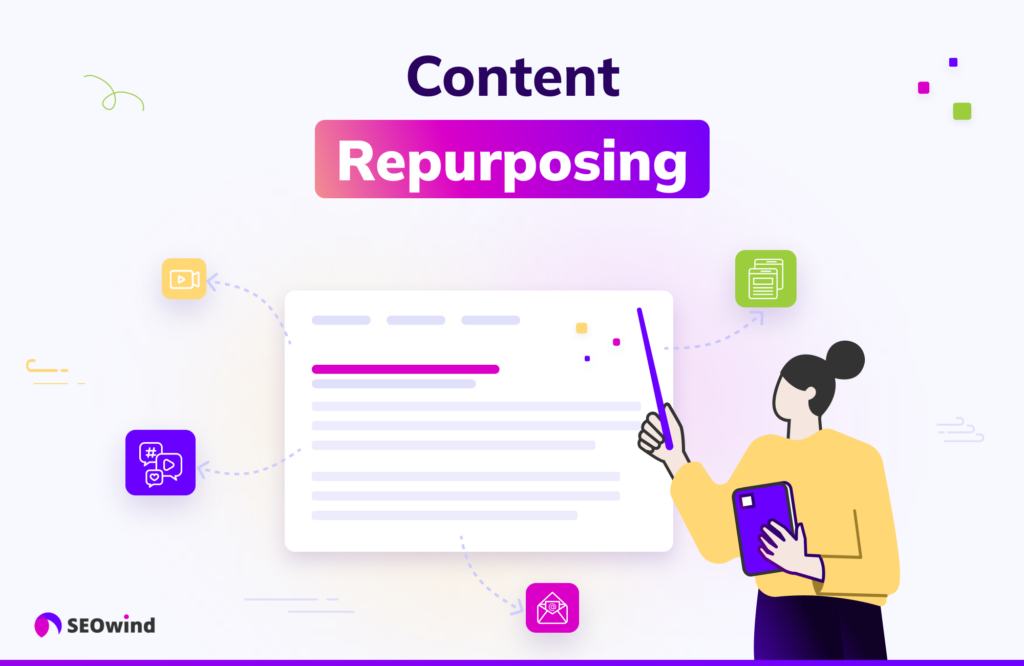
Exploring new ways to extract more value from your existing content is one of the most effective content marketing tips for 2024. The repurposing range allows you to utilize a single idea in multiple formats and platforms, reducing the workload of creating fresh material while maximizing its impact on your target audience. Important factors to consider when repurposing content include reformatting the materials, selecting suitable distribution channels, and updating outdated information. Below are some key strategies for repurposing your existing content.
Transform Blog Posts into Podcasts or Videos
One excellent approach to extending your blog posts’ reach is converting them into podcasts or videos. With these formats, you can satisfy various preferences among audience members who absorb information through auditory stimuli or engaging visual elements. Podcasting has grown exponentially in recent years, making it an essential method for businesses interested in capitalizing on this expanding medium.
Create Infographics from Data-Driven Content
Condensing data-driven articles or reports into visually appealing infographics lets readers quickly digest complex information. Infographics simplify statistics and complex ideas and foster engagement by presenting concise knowledge blocks packed with powerful visuals. Additionally, infographics are highly shareable across social media networks and other online platforms – alluding to potential virality within the industry.
Turn Guest Posts into Expert Roundups
If you have previously hosted guest posts from industry professionals on your website or blog, consider reorganizing their contributions into expert roundups by grouping complementary insights. This technique generates fresh perspectives and solidifies your standing as a knowledge hub in the chosen domain.
Develop Engaging Social Media Content
Lastly, pay attention to the importance of forging a strong presence on social media platforms such as Facebook, Twitter, LinkedIn, Instagram, and Pinterest. By creating derivative micro-content pieces utilizing quotes extracted from past blog posts or articles within your repertoire – you can engage users insightfully and conveniently.
Tip 27: Update Your Content

A crucial aspect of content marketing success is ensuring that your online materials remain fresh and relevant. Updating your content can improve its SEO ranking, provide valuable information to new readers, and reinforce your authority within the industry. In this section, I will discuss some effective strategies for updating existing content and demonstrate how they can contribute to enhanced content marketing outcomes.
Perform a Content Audit
Conducting a comprehensive audit is essential before updating any material on your website or blog. A content audit lets you identify which pieces are outdated or underperforming and require revision. Additionally, by evaluating factors such as page views, bounce, and conversion rates, you can determine which topics resonate with your audience and prioritize updating those first.
Refresh Outdated Information
One of the primary reasons for updating online content is to ensure accuracy. Remove or modify outdated statistics, facts, examples, or event references. Replace them with recent data sets obtained from reputable sources. This strategy not only maintains the integrity of your work but also enables audiences to rely on you for current insights into their fields of interest.
Improve Readability and User Experience
Another essential consideration when revisiting older materials is usability – both from a reader’s perspective as well as an SEO standpoint:
- Break up long paragraphs into smaller sections.
- Incorporate subheadings and bullet points where appropriate.
- Look out for grammar or sentence structure errors that may have been overlooked initially.
- Optimize metadata (e.g., titles and descriptions) using current best practices for search engine optimization.
Enhancing readability and user experience encourages visitors to engage more with your content.
Incorporate New Keywords
When auditing existing articles or webpages, reevaluate the target keywords used during their initial creation phase. Industry-specific phrases could evolve. Hence integrating updated terminologies – such as long-tail keywords – may generate better results in terms of SEO and visibility. Be sure to insert these new keywords organically and avoid keyword stuffing, showing search engines that your content is relevant and valuable for readers.
Add Internal and External Links
Remember to include internal links when updating existing content, as this can help guide users to related articles on your website while improving the overall site structure. Additionally, examine external resources mentioned in the article: have any become obsolete or irrelevant? Replace them with new sources that offer valid insights catering to user intent.
In conclusion, routinely revisiting your published materials allows you to maximize their potential through optimization practices such as updating outdated information, enhancing readability, incorporating new keywords, and refining linking strategies. Making a conscious effort to maintain up-to-date content bolsters your credibility and improves overall content marketing outcomes. Keep these tips top of mind as you strive for content marketing success.
Tip 28: Promote Your Content
One of the essential content marketing tips is to pay attention to the importance of promoting your content. Crafting high-quality, valuable content is only half the battle; you must ensure it reaches your target audience effectively. Below are some tried-and-tested strategies for maximizing your content’s visibility and reach.
Utilize Multiple Distribution Channels
To expand your content’s accessibility, deploy a multi-channel approach when distributing it. These channels may include:
- Email newsletters
- Social media platforms
- Online forums or communities
Employ different tactics tailored to each platform and keep track of which perform best so that you can continually refine your promotion strategy.
Leverage Social Media Platforms
Social media offers numerous opportunities to amplify your content reach. Create custom visuals, teasers, and captions that encourage users to click through and share them with their followers. Take advantage of social listening tools to identify key influencers within your niche and engage with them to build relationships that could lead to increased exposure.
Do Blogger Outreach
Another effective way to promote content is by reaching out to industry bloggers or influencers who cater to your target audience. Share articles with bloggers you feel will find value in featuring your work on their websites or considering guest posts. This tactic connects you with a new group of readers and contributes to building essential backlinks for SEO.
Start Content Remarketing
Content remarketing involves targeting individuals who have previously engaged with your brand but haven’t made any concrete commitment (such as filling out a form). By creating specific ads targeted at these users across various platforms like Google Display Network or Facebook Ads, you can bring them back into the buyer’s journey after they’ve left.
Collaborate With Industry Partners
Collaborating with complementary businesses within similar industries can increase brand credibility and visibility. Consider guest posting on other reputable blogs, hosting webinars, and creating joint whitepapers or industry reports.
By implementing these content promotion techniques, you’ll be better positioned to maximize the effectiveness of your content marketing strategy and ultimately increase overall engagement with your brand. Remember, a well-researched and well-written piece still needs proper distribution and visibility to make a significant impact.
Tip 29: Utilize Multiple Distribution Channels
Diversifying your approach can help you reach and engage a broader audience, increase brand awareness, and drive more website traffic. Let’s explore several core channels for distributing content and offer some content marketing tips on effectively leveraging each one.
Organic Search
One key distribution channel is organic search, which involves optimizing your content for search engines like Google and Bing. Targeting specific keywords in your articles or blog posts can improve your content’s chances of ranking higher in search results for relevant queries. Ensure that you:
- Perform thorough keyword research,
- Utilize proper on-page SEO techniques,
- Continually monitor and refine your target keywords as needed,
- Build high-quality backlinks.
Social Media Platforms
Social media platforms play a significant role in today’s content marketing landscape. Sharing your content across different networks expands its reach exponentially, making it easier for users to share further with their followers or friends. When leveraging social media:
- Customize each blog post according to the platform (e.g., Twitter requires brevity, whereas Facebook allows longer descriptions).
- Use eye-catching visuals to boost engagement.
- Interact with your audience through comments or direct messages.
- Comment on popular industry-related social groups or forums with useful tips backed by links to relevant published materials.
Don’t limit yourself to only creating text-based articles here – images, videos even podcasts contribute immeasurably towards helping businesses optimize their digital presence!
Tip 30: Leverage Social Media Platforms

An essential component in content marketing is the strategic utilization of social media platforms. You can effectively leverage these channels to improve your brand visibility and create a powerful connection with your target audience. This section will discuss valuable content marketing tips for utilizing social media to amplify your impact.
Choose the Right Platforms
To start, identify and focus on the platforms that resonate most with your target audience. Take note that each platform fosters a unique environment and caters to specific demographics:
- Facebook is excellent for reaching a broad audience and promoting long-form content.
- Instagram thrives with visual-centric stories attracting younger generations.
- LinkedIn is ideal for engaging professionals through industry-related posts.
- Twitter enables bite-sized updates while tapping into current trends via hashtags.
Invest time researching these platforms and determining which ones align best with your business goals.
Optimize Content for Each Platform
Each social media platform requires a tailored approach when sharing content. Here are some recommendations:
- Adapt your tone: Keep it professional on LinkedIn, conversational on Twitter, and fun on Instagram.
- Adjust format: Use short videos or images for Instagram Stories, concise Twitter snippets, and well-crafted LinkedIn articles.
- Post frequency: Balance your posting schedule based on platform norms; daily activity might work well on Twitter but could overwhelm connections if done too frequently on LinkedIn.
By catering to each platform’s preferences, you’ll maximize engagement levels among your followers.
Engage With Your Audience
Strong engagement helps cement customer loyalty and fuels word-of-mouth promotion; therefore, prioritize promptly responding to comments or messages across all platforms. Solicit feedback from followers by asking questions or creating polls; show them their input is valuable by implementing their suggestions where appropriate.
Don’t shy away from controversy — healthy debates within the comments section increase exposure and encourage active participation. Remember, with effective social media marketing: engagement is king.
Monitor Analytics
To ensure content marketing success, closely track your campaigns on social platforms and analyze relevant data insights from tools like Facebook Insights, Instagram Analytics, or third-party applications such as Hootsuite and Sprout Social. This data helps to:
- Analyze performance against goals
- Identify areas that need improvement
- Learn which types of posts engage well with specific audiences
- Adjust future strategies accordingly
Incorporate these content marketing tips to harness social media platforms’ power and elevate your campaigns’ reach, impact, and success in 2024.
Tip 31: Do Blogger Outreach
Blogger outreach involves reaching out to influencers, experts, and thought leaders within your industry to amplify the reach of your content. By forming these valuable collaborations, you will improve your online presence and enhance your credibility as a trusted authority.
To begin building relationships with influential bloggers, consider implementing the following strategies:
- Comment on their blog posts with insightful thoughts or questions.
- Share their articles on social media platforms while tagging them.
- Interact with their tweets or LinkedIn updates by reciprocating likes and comments.
By connecting with influencers in these ways, you establish yourself as an active participant in the conversation surrounding your industry, demonstrating that you are genuinely interested in learning from others and contributing to discussions.
Identify Relevant Guest Posting Opportunities
Another aspect of successful blogger outreach lies in identifying guest posting opportunities on reputable websites within your niche that allow for sharing high-quality and in-depth content. Contributing guest posts can position you as a credible expert amongst wider audiences while driving traffic to your site via backlinks inserted into the article.
Here are some crucial steps when pursuing guest posting opportunities:
- Research popular websites leveraging keywords relevant to your sector
- Study contributor guidelines thoroughly before submitting pitches
- Craft compelling articles explicitly tailored toward the target publication’s readership
Striking the right balance between providing useful information and subtly promoting your brand is essential to convincing editors that both they and their audience stand to benefit from publishing your content.
Leverage Bloggers’ Expertise for Your Content
Just as you may seek guest posting openings on other sites, it’s also wise – to invite established influentials within related domains onto yours, featuring exclusive interviews or opinion pieces directly taps into a wealth of knowledge gained over years of experience. Moreover, collaborating with bloggers with solid online followings and reputations can significantly enhance your content marketing success.
To effectively harness these benefits, remember to:
- Request input on topics aligned with not only their expertise but also areas you wish to explore
- Involve them during the planning phase through discussion sessions or brainstorming meetings
- Syndicate your collaborated articles on both parties’ social media channels, thus helping expand reach mutually
Blogger outreach is an often underutilized yet highly-impactful content marketing technique that bolsters SEO and drives exposure to vast new audiences interested in your niche. By establishing connections with influencers, you can significantly elevate awareness surrounding your brand while staying fully immersed in industry developments.
Tip 32: Start Content Remarketing
Content remarketing, a powerful content marketing tip often overlooked by businesses, is the art of reintroducing your existing content to audiences who have previously interacted with it. This strategy allows you to amplify the visibility and reach of your material while encouraging repeat engagement from your visitors.
Why Content Remarketing Matters
The online environment can be incredibly cluttered and competitive. No matter how good your content may be, there’s always a chance that even interested users might overlook or forget about it among the deluge of information they’re exposed to daily. By employing content remarketing techniques, you can ensure that your key messages stay top-of-mind for those who’ve shown interest in them.
The Benefits of Content Remarketing
There are several compelling reasons to consider adding content remarketing to your arsenal of marketing tools:
- Increased brand visibility: Repurposing familiar content reminds potential customers of previous interactions with your brand and strengthens awareness.
- Enhanced audience retention: Regularly delivering relevant messages helps keep leads engaged and encourages more profound levels of understanding.
- Cost-effectiveness: Leveraging existing assets minimizes the need for new investments in resource-intensive creation efforts.
- Improved conversions: Targeted follow-up content enhances lead nurturing initiatives and drives prospects toward desired actions.
Implementing Content Remarketing Strategies
To begin engaging in effective content remarketing, follow these best practices:
- Identify Your Best-Performing Pieces: Analyze site traffic and user behavior data to determine which articles or resources generated significant engagement and struck a chord with your target audience.
- Segment Your Audience: Crafting focused messaging necessitates segmenting lists based on various criteria, such as demographics or consumption patterns. Furthermore, specific platforms offer granular retargeting options for precise delivery targeting.
- Repackage Existing Content: Refrain from simply sending out duplicate items; instead, integrate fresh perspectives or expand upon earlier material to ensure remarketed versions resonate with your audience. Transform blog posts into podcasts or infographics, for instance.
- Plan Your Retention Efforts: Strategize the timing and placement of your remarketing campaigns in a way that thoughtfully complements original content distribution initiatives.
Tip 33: Reuse Your Best Headlines in PPC Ads
Pay-per-click (PPC) advertising can be a powerful tool for driving traffic to your content. However, creating compelling ad copy is crucial to maximizing click-through rates and conversions. One of the most proven content marketing tips you should consider is repurposing your best headlines for PPC ads.
Analyze Successful Content Headlines
To get started, review your existing content pieces and identify those with the highest levels of engagement or conversion. Examine the headlines used in these successful articles and pinpoint common elements such as specific keywords, emotional triggers, or calls-to-action that may have resonated well with your target audience.
Transform Engaging Headlines into PPC Ad Copy
Utilizing this information, adapt your high-performing headlines into ad copy suitable for PPC campaigns by:
- Focusing on clarity and conciseness, ensuring key points are conveyed within character limits set by ad platforms.
- Incorporating relevant keywords from your research to improve ad targeting and Quality Score.
- Including a persuasive call-to-action (CTA) that encourages potential readers to engage with your content.
Remember to create multiple variations of each ad copy while maintaining the core message intact—testing different versions will provide valuable insights into what works best for your unique audience.
You’re leveraging data-driven insights from past successes by reusing proven headlines in PPC ads instead of relying only on intuition when crafting advertisements.
It’s essential not just to implement headlines verbatim but to assess the goals specifically associated with PPC—primarily driving clicks towards landing pages or blog posts—and revise them accordingly while staying true to their original intent.
Track Performance Metrics and Refine Strategy
Finally, ensure diligent monitoring of performance metrics such as click-through rate (CTR), cost per click (CPC), and conversion rate after implementing revamped headlines into your ads. Assessing these content marketing metrics will help you determine which headlines perform best and allow for further optimization of your PPC campaigns based on data-driven insights.
In conclusion, reusing your best headlines in PPC ads is a practical content marketing tip that allows tapping into prior audience engagement insight to boost the success of your paid promotion efforts. Always analyze existing high-performing headlines, modify them as needed for the ad format’s constraints and goals, execute ongoing testing for continuous improvement, and monitor key performance indicators to craft winning PPC strategies.
Tip 34: Measure and Track Results
One of the most crucial content marketing tips for achieving success is to measure and track the performance of your content consistently. By analyzing data, you can gain valuable insights into what works best for your target audience and make informed decisions for future campaigns. Here are some key metrics you should monitor:
Website Traffic
Attention to website traffic can help you understand how effectively your content attracts visitors and meets their needs. Consider tracking metrics such as:
- Overall traffic
- Traffic sources (organic, paid, referral, social, etc.)
- Bounce rate
- Time on site
- Pages visited per session
Engagement Metrics
Engagement metrics help you evaluate how well your content resonates with readers and encourages interaction. Look out for these indicators:
- Comments on blog posts
- Social shares and likes
- Video views and watch time (for video content)
- Downloads or sign-ups related to your content
Conversion Metrics
Your ultimate goal should be to convert visitors into customers or leads. To assess how well your content contributes to this goal, measure conversion-related metrics like:
- Number of leads generated from specific pieces of content
- Newsletter subscriptions attributed to your content
- Percentage of visitors who completed desired actions (e.g., purchasing a product or signing up for a webinar)
SEO Performance
Since search engines are one of the primary ways people discover online content, keeping tabs on how well your material performs from an SEO perspective is vital. Some essential SEO performance indicators include:
- Keyword rankings in search results
- Organic search traffic volume
- Click-through rate from search results pages
To make measuring these metrics more manageable, utilize analytics tools like Google Analytics and Moz.
Furthermore, don’t just focus on vanity metrics like page views; instead, prioritize assessing the impact of each piece of content on driving specific business goals.
Consistently measuring and tracking your content marketing efforts’ performance helps you identify what works well with your target audience and fosters a data-driven approach to decision-making for future campaigns. So, make sure to factor in these essential content marketing tips on measuring results as part of your overall strategy.
Tip 35: Use AI for Content Marketing
Artificial intelligence (AI) has been rapidly evolving and transforming industries across various sectors, including marketing. Embracing AI-driven solutions can revolutionize your content marketing efforts by generating insights, personalizing experiences for users, automating processes, and saving precious time.
There are several ways you can infuse AI into your content marketing strategy:
- Automate topic research: Leverage tools like BuzzSumo, SEOwind, or Frase to find trending topics within your niche and craft fresh content surrounding those trends.
- Optimize headlines: Platforms such as CoSchedule Headline Analyzer analyze keyword alignment, emotional impact, and other factors so that you can create attention-grabbing headlines.
- Personalized emails: By harnessing AI-powered email marketing you can deliver tailored content recommendations based on user preferences.
- Content creation & curation: Tools like SEOwind can help you with creating content at scale by using AI to do content and keyword research, create outlines and write comprehensive articles.
- Image creation: Create custom images via Midjourney to impress your audience.
